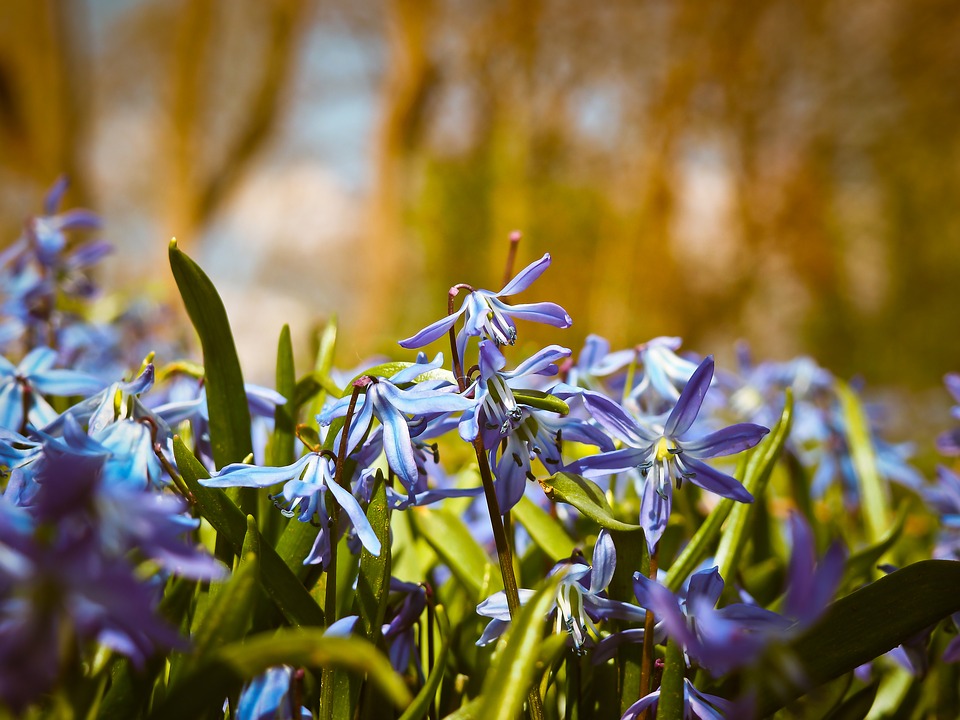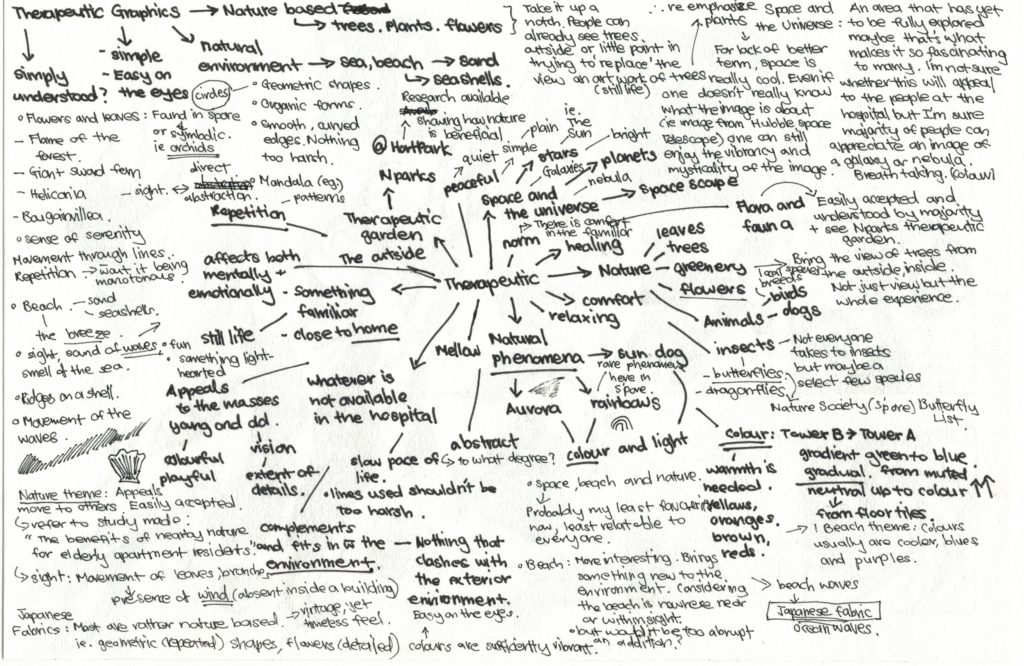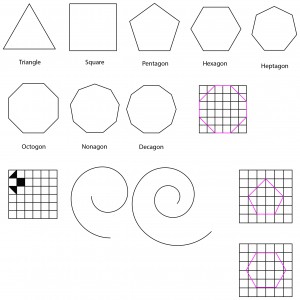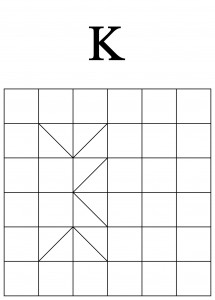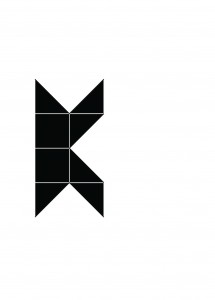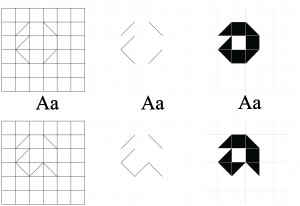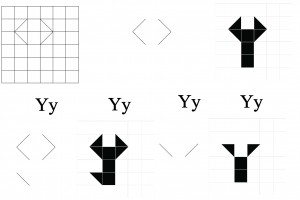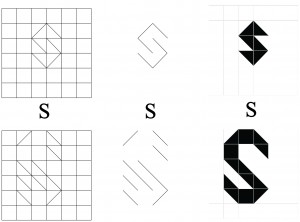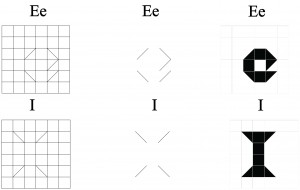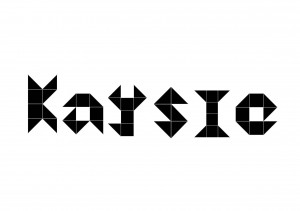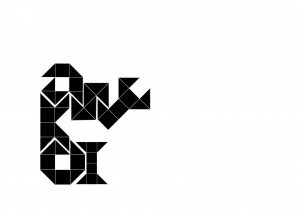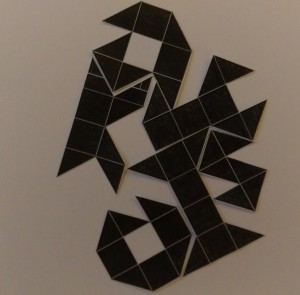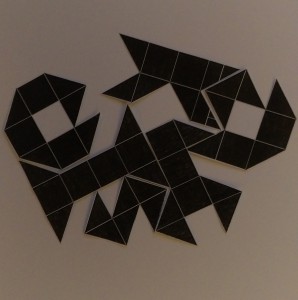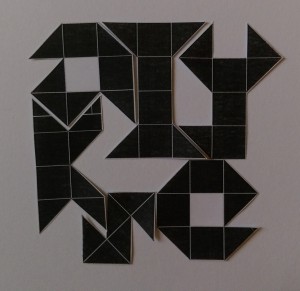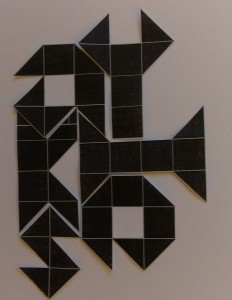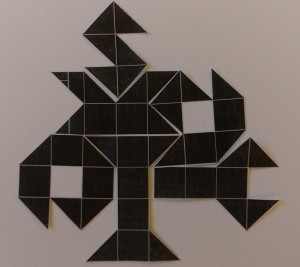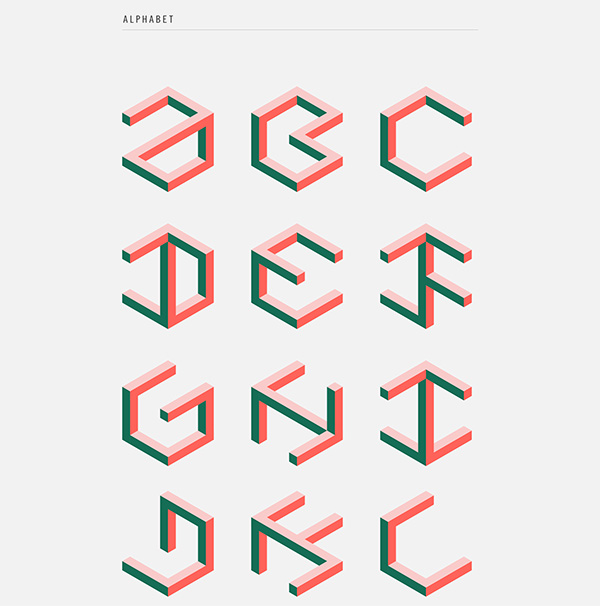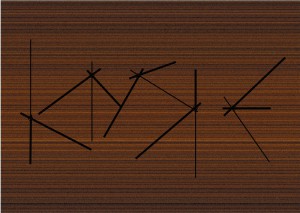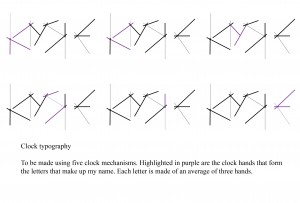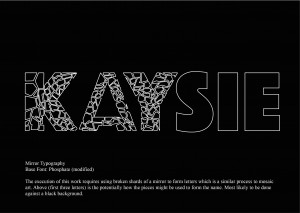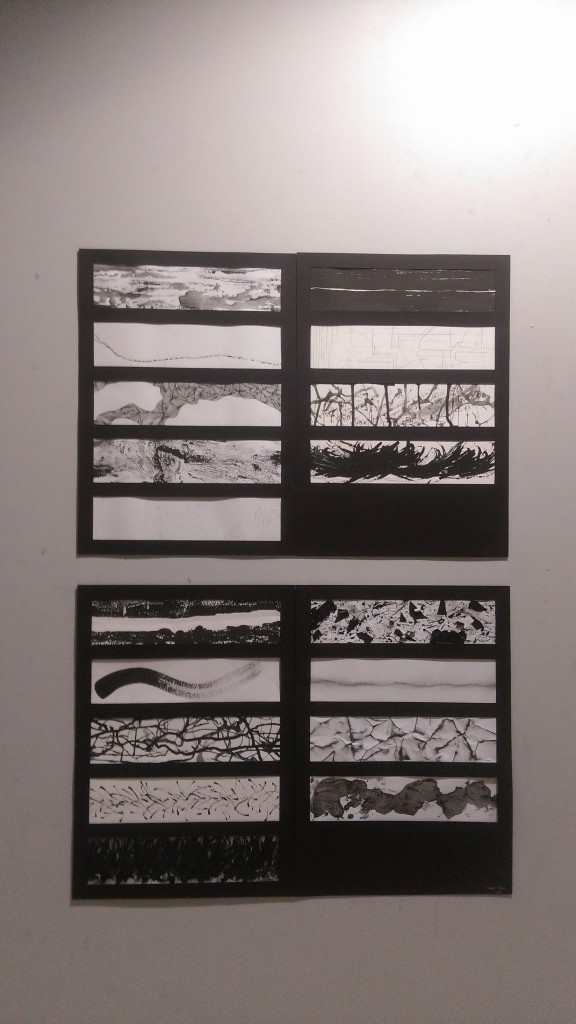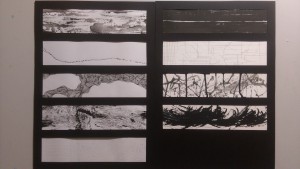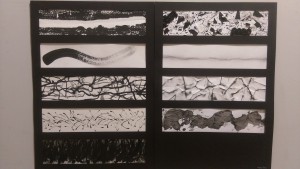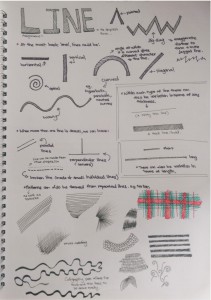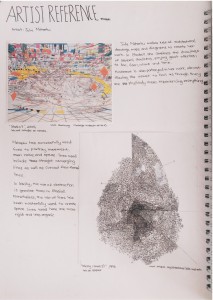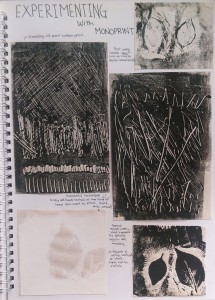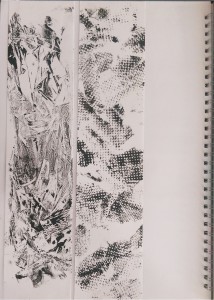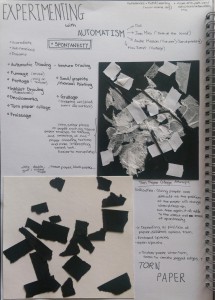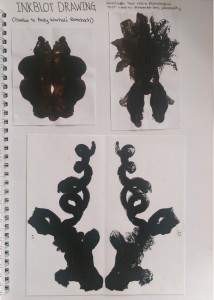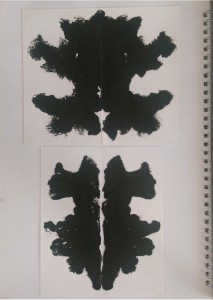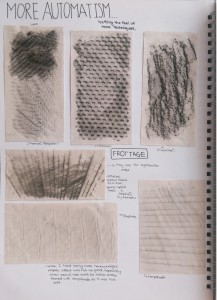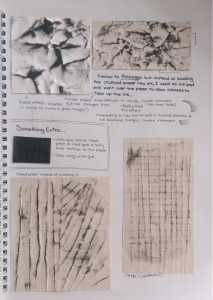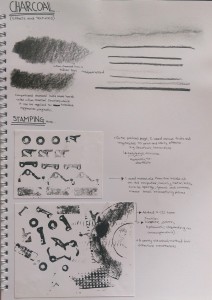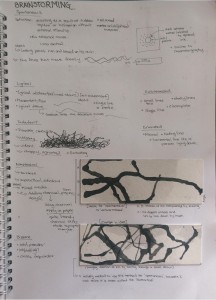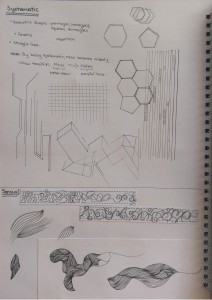Task 1
Site Visit and Key Observations
Location: Link Bridge connecting Tower A and B of Ng Teng Fong Hospital
Demographic: Patients (i.e. wheelchair bound), staff (doctors, nurses, etc), the elderly (high percentage) and children
Traffic flow: Differs with time. Increases during times such as lunch hour. Generally, the walking speed of those who take the travelator is much slower than those who choose to walk. Speed also differs between different groups of people (i.e. the elderly tend to walk at a more leisurely and slow pace whereas the staff would walk at a quicker pace).
People who did take the travelator would tend to look out of the windows whilst travelling. On the hand, there was a much lower chance of observing someone looking out when they chose to walk instead, more often than not they would be using their phones.
Physical Features
The area is neutral and muted in colour, the link bridge itself is not that big but with the two sides serving as large continuous windows, there is an illusion of a larger space. White walls, ceiling and floor tiles. White floor tiles are speckled with small grey rectangular tiles.
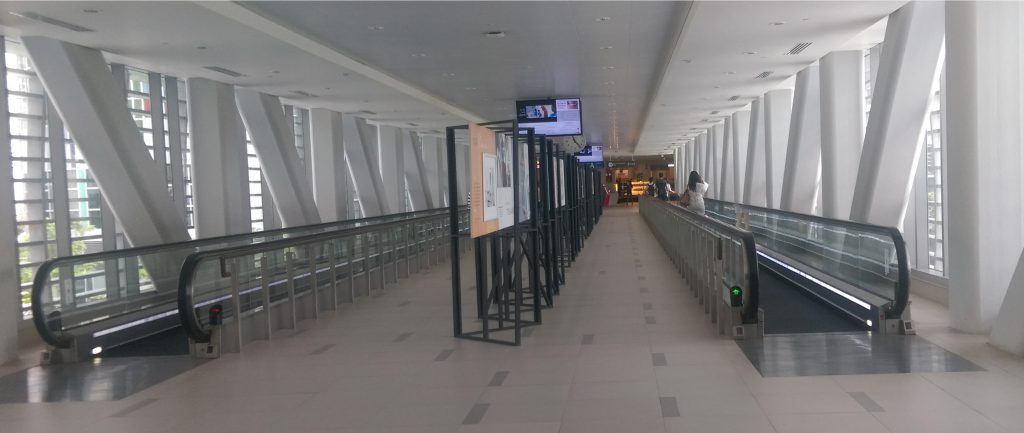
Tower B has green signage while A has blue signage, both of which are only visible when walking towards the towers.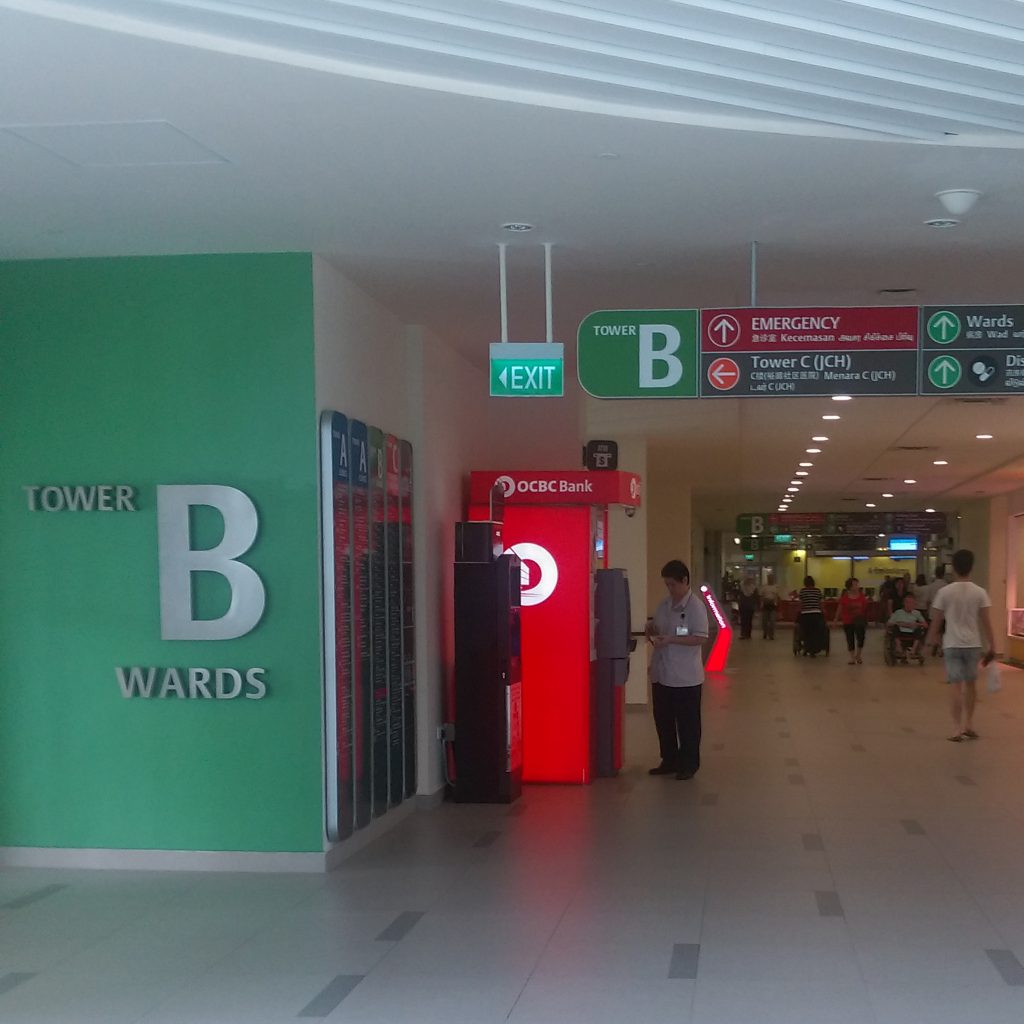
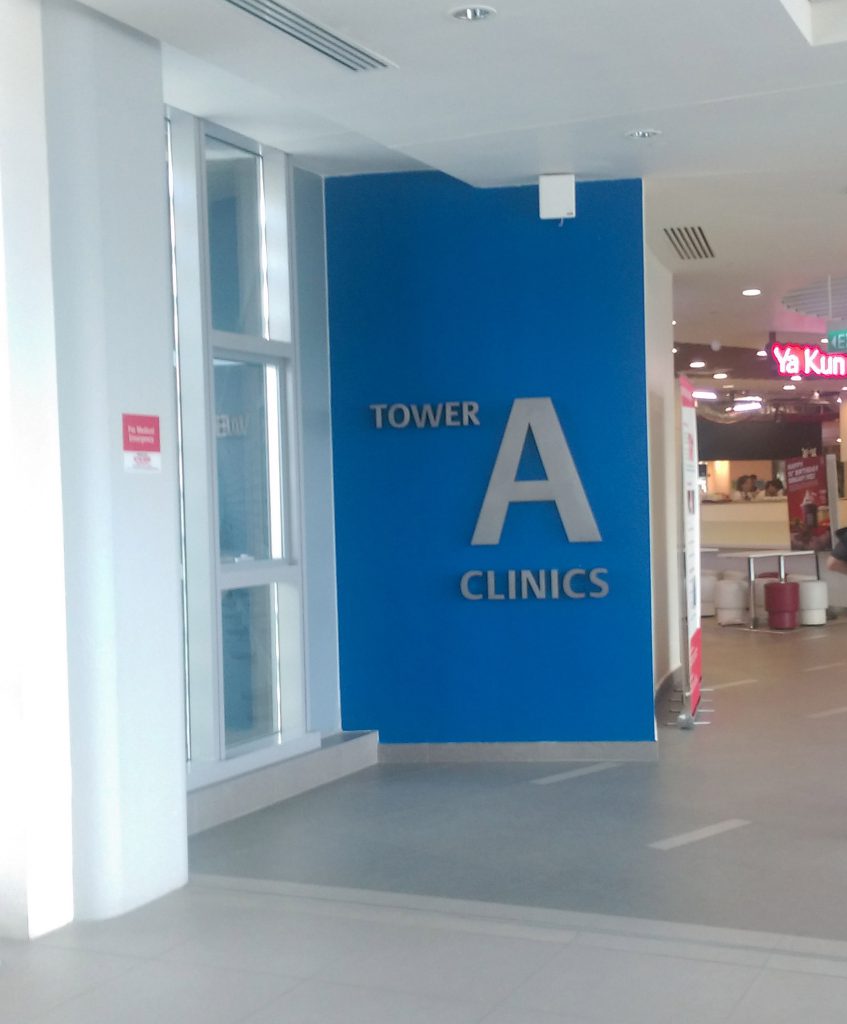
Two parallel travelators flanking each side of the link bridge. The space between the two travelators does seem to take up a large proportion of the bridge. There are large windows with horizontal dividers at regular intervals that disrupt the view and light flow.
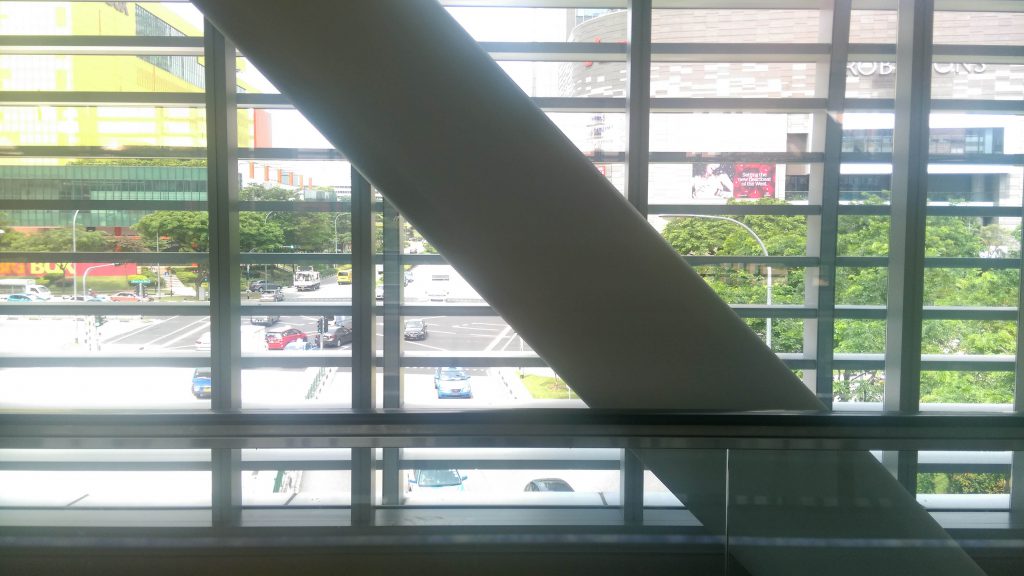
Alternating grey pillars of perpendicular (to ground) and diagonal positions can be found at both sides of the bridge. The pillars give the illusion of a zigzagging pattern.
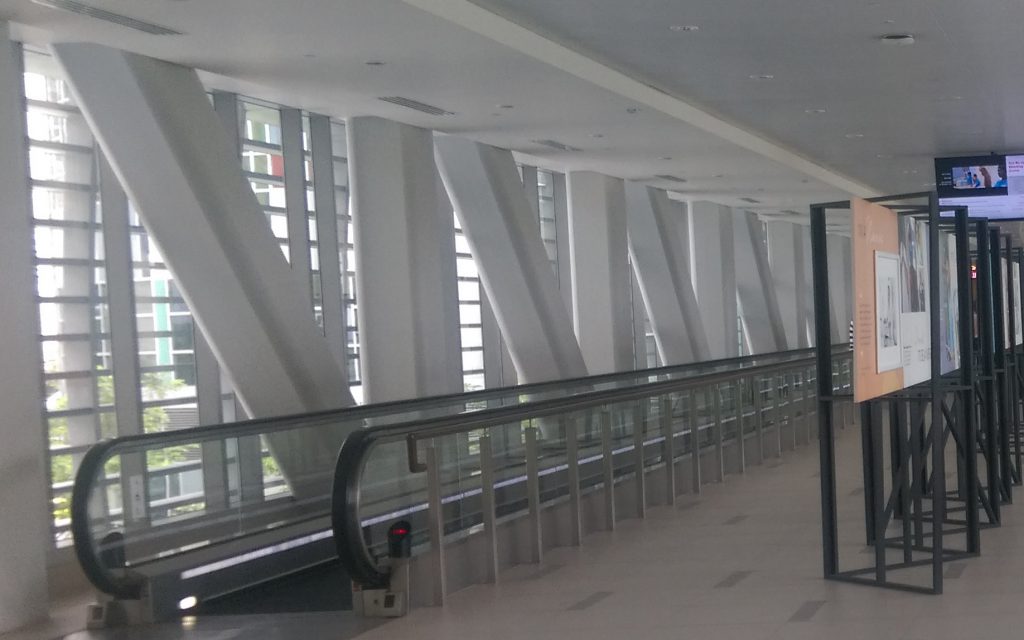
Use of the Space
The space is being used minimally, there are no shops along the bridge. The large space between the travelators is currently being used for display purposes. However this also means that space will be left vacant. Space probably left to accommodate high traffic flow. The link bridge as its name suggests, allows people to travel from Tower A to B and vice versa. The majority of people use the bridge as a way to tower A where the eateries are, but also to get to the MRT.
Tower A Clinics: Eateries, MRT, Westgate
Tower B Wards: ATM, florist, cafe
Exterior of the Space
Relatively busy roads, shopping centers(i.e. JEM), a couple of trees. Relatively more trees visible nearer towards Tower B on the right (standing facing towards A). IMM building sign is visible. At a glance, there are hints of green as one walks from one end of bridge to the other.
The Public’s View
With regard to how the public feels about the space, there is a general consensus that the selected area is quite plain as with most parts of the hospital.
My View
The décor area is generally quite plain and simply. I do like the extensive use of windows, lets in a lot light. Brightens the area, gives the illusion of a larger space. I also enjoy having the option to look out, to have something to do while on the travelator.
As compared to the other areas of the hospital, this portion seems a lot friendlier (which is a given since there are shops and amenities that we normally see outside of a hospital) common sight in most hospitals. But with that being said, it does seem quite cold an area, not much going on, that coupled with the fact that there isn’t much colour in the area (i.e. white walls, neutral tones throughout without much variation in shades, even floor tiles) as compared to other hospitals (NUH).
The one thing that I immediately do notice is the smell of coffee and bread of the cafes of both A and B, and that does make the place feel a lot my homey. If one were to momentarily ignore the fact that that is a hospital and take in the sights, smell and sounds, it could very well come across as a portion of a shopping center as far fetched as that sounds.
Key points from the visit
- Two travelators on each side, proportionally large space in between travelators
- Neutral colour scheme of whites and greys
- Large windows with dividers, well lit but view is disrupted
- Limited greenery outside building
- Space is plain and could use more colour
- Bridge used by people of all ages, different walking speeds
theme
Nature
(Flora and Fauna)
Flora and fauna with an emphasis on local species of plants (orchids, heliconia) and butterflies (common tiger, courtesan))
I often associate nature, and in particular plants with serenity and relaxation thus it was a given that I would want to create a design pertaining to that. Organic shapes and forms, curved lines and nothing too angular were guidelines that I set for myself. I feel to many sharp angles make a design look too harsh. Organic forms are easier on the eyes.
There have been studies that have showed the importance and benefits of being close to and surrounded nature especially for patients and the elderly.[1] In Singapore alone, the presence of The Therapeutic Garden @ HortPark is proof of the benefits of nature and greenery. With that in mind, I know this theme would probably be a more effective base for the creation of therapeutic graphics. Most of the people who would benefit from the nature theme are in the majority who visit the hospital. I also found another article talking about the benefits of nature in the healing process. Link to article: https://musedialogue.org/articles-by-genre/artsandlife/arts-and-healing-vol-1/healing-art-one-part-imitation-one-part-imagination/
These elements will also complement the existing exterior of the building (the trees and greenery present outside). There are trees outside but there does not seem to be plants, flowering or not, of equal quantities. The elements of this theme will help emphasise the greenery and hopefully bring the it closer to the people who use the bridge.
Having a work that involves plants, flowers etc, elements that people are already familiar with, would hopefully make the work more inclusive since it can be appreciated by all ages. The sense of familiarity from looking at something may also help to relax one and thus serve as a therapeutic purpose. I want elements that are easily accepted by all if not the majority. I decided to focus on local species of plants and butterflies because that will again help to bring a sense of familiarity.
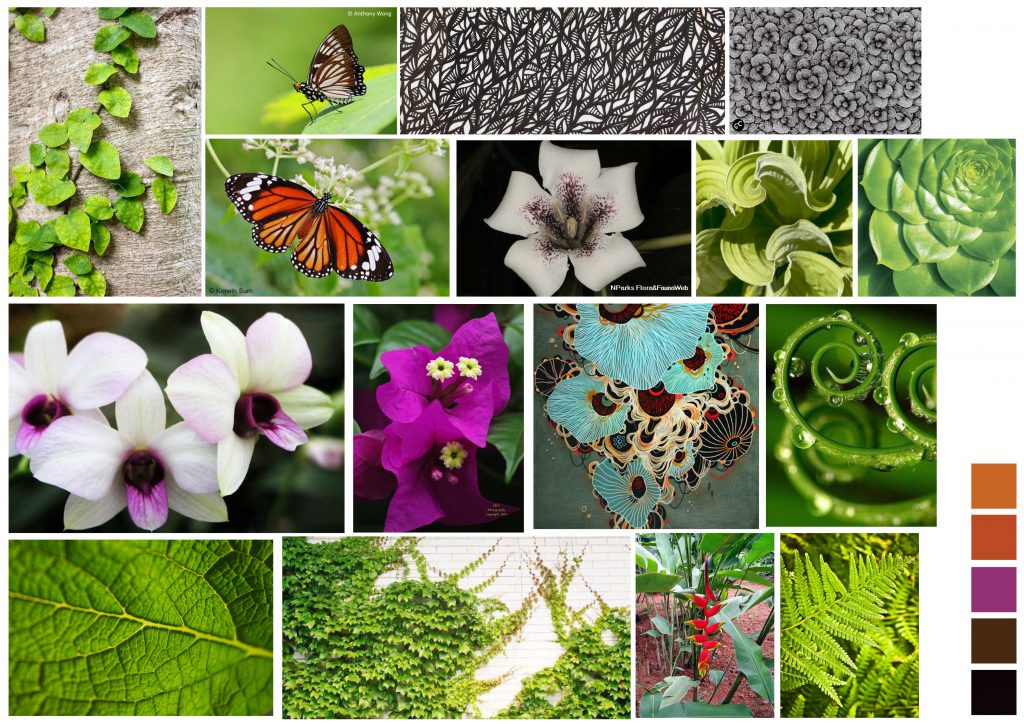
I was inspired by Russian artist Vasilj Godzh’s works which employs lines and intricate details. The manipulation of lines by Godzh is incredible, creating monotone works with depth and texture.
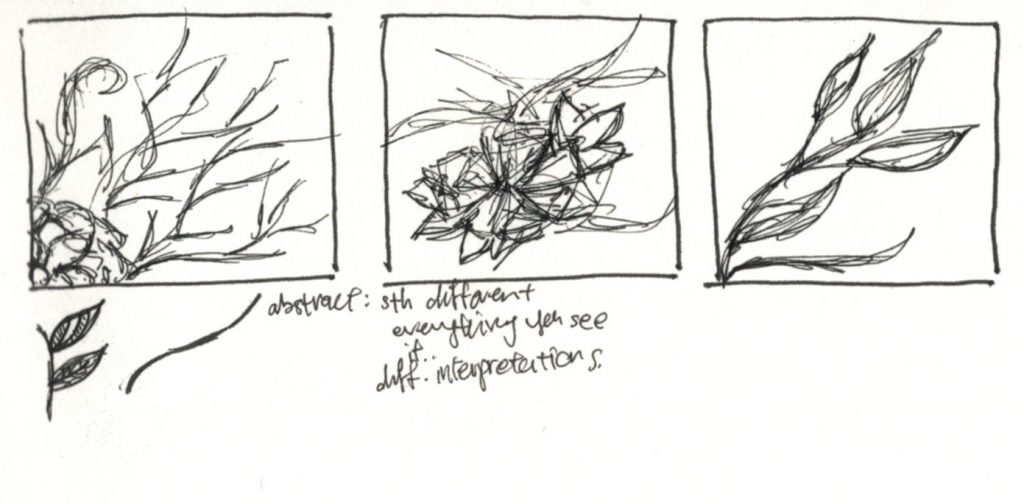
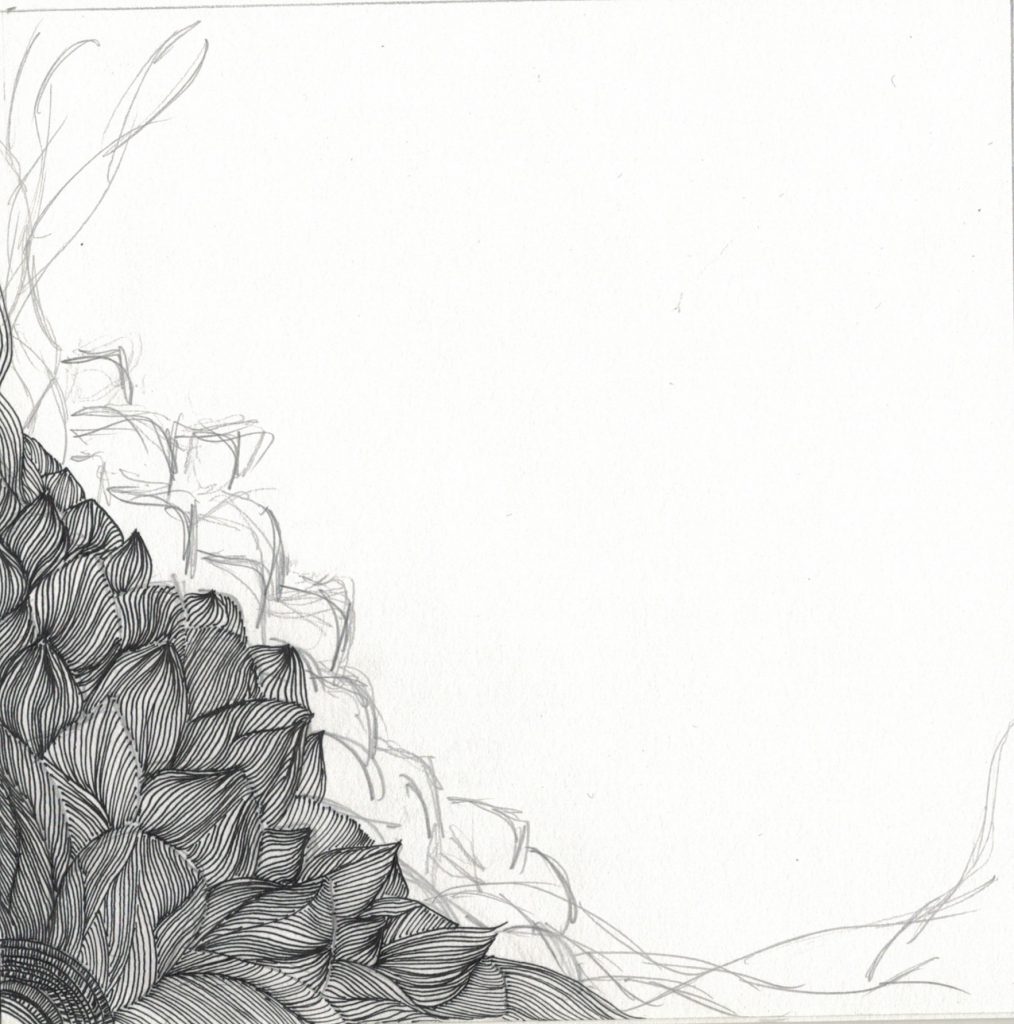
[1] Talbot, JF, and R. Kaplan. “The benefits of nearby nature for elderly apartment residents.” Search Results The International Journal of Aging and Human Development 33, no. 2 (1991): 119-130.
Nature
(Waves and Seashells)
The theme of nature is extremely broad and I don’t want to limit my options as of yet so I have included another possible sub-theme. I decided to create a design based on elements from the beach, namely the the ocean waves and seashells. The elements would bring something new to the existing environment since the beach is not within sight of the hospital. The repetitive sound of waves lapping and its constant movement becomes very relaxing and calming. I intend to bring this repetition of sound and movement into the design via a repetition of lines.
I decided to gain more inspiration from Japanese fabrics, particularly those of the ocean theme. I fancy their use of lines to represent waves in a simple yet sophisticated manner. The works of Tracie Cheng were also of great inspiration as she uses lines to create movement and form.
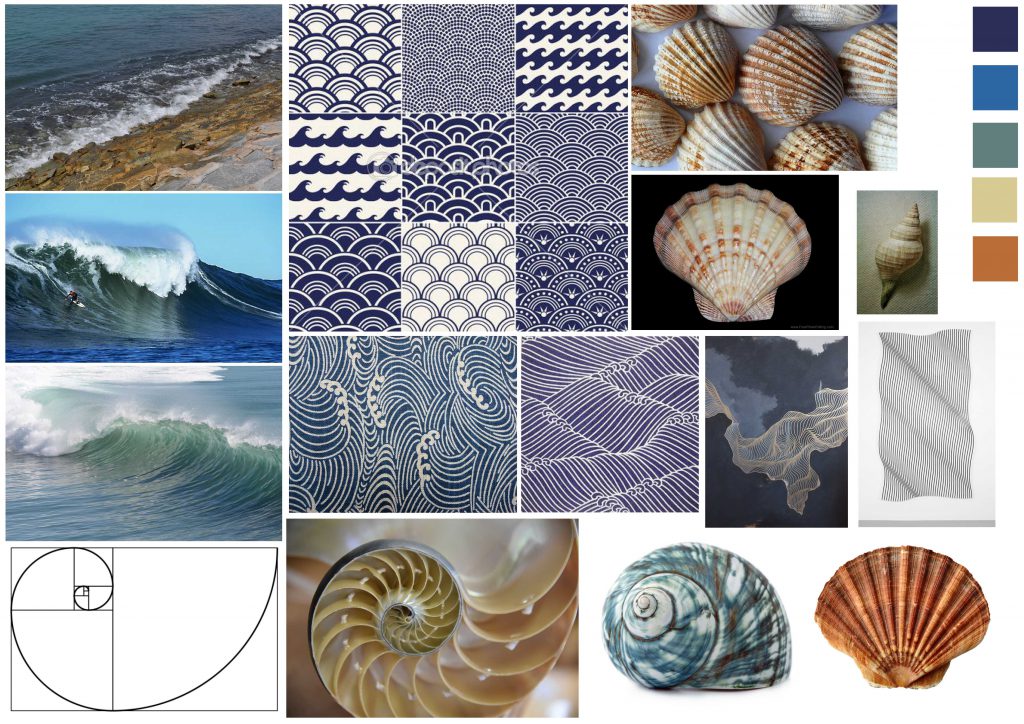

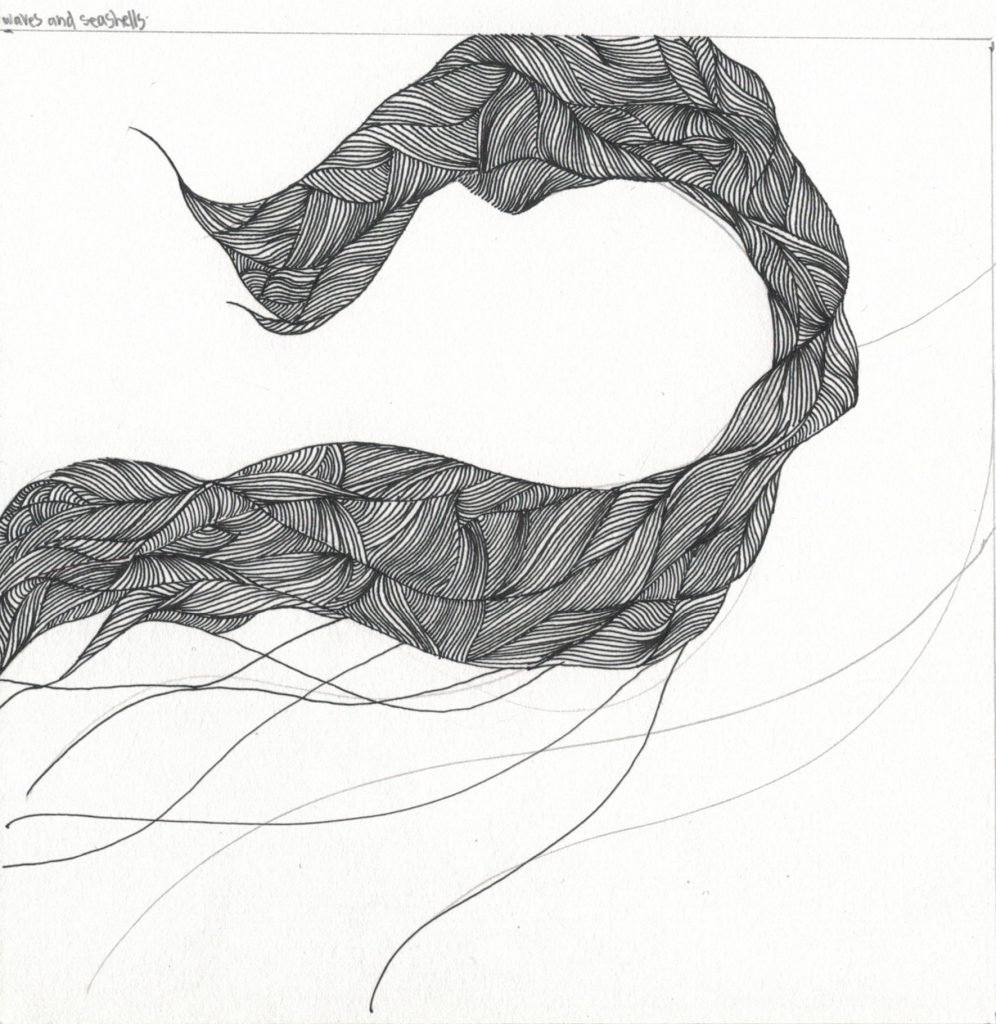
The reason for the inclusion of seashells started from the thought of the Golden ratio; the correct proportions to create something aesthetically pleasing might actually be therapeutic, because it somehow looks correct to the human eye. So, the Golden ratio Fibonacci sequence it was and the Fibonacci spiral which is often seen in shells. Shells themselves have such interesting textures and ridges that can be used in my design. As a side note, picking seashells seems to be an activity that many have done for fun, hopefully the sight of shells might trigger the child in all of us.
